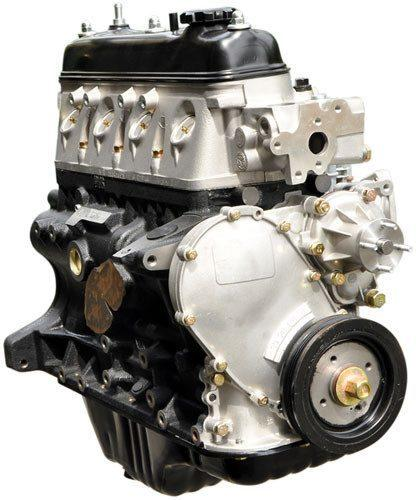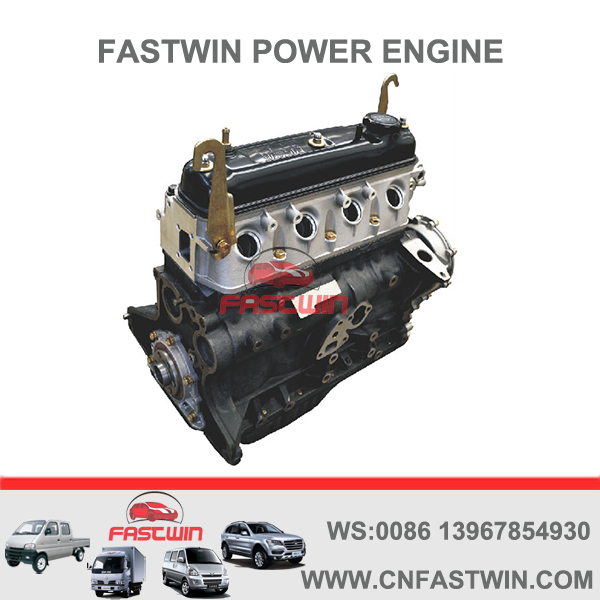How to Maximize Fuel Economy with Your 4Y Engine
Why the Engine Is the Best Selection for Performance and Performance in Your Cars And Truck
The engine continues to be a pivotal component in automobile style, mostly due to its considerable impact on both performance and efficiency. As developments in innovation make it possible for smaller sized engines to supply impressive power while optimizing gas economic climate, the combination of functions such as turbocharging and crossbreed systems ends up being progressively crucial.
Recognizing Engine Kind
Comprehending the different types of engines is vital for maximizing efficiency and effectiveness in vehicle style. The main engine types include inner burning engines (ICE), electrical engines, and hybrid systems, each offering unique advantages and limitations.
Inner burning engines, which can be additional categorized into gasoline and diesel variations, depend on the combustion of gas to produce power. Gas engines usually offer higher RPMs and better acceleration, while diesel motor are recognized for their torque and gas effectiveness, making them optimal for durable applications.
Electric engines, on the other hand, make use of electric motors powered by batteries or fuel cells. They offer rapid torque distribution, leading to smooth acceleration and lower emissions. The performance of electrical engines is substantially more than that of ICEs, making them a prominent choice for eco-conscious consumers.
Crossbreed systems incorporate both inner burning and electrical engines, leveraging the toughness of both innovations. They optimize gas consumption by utilizing electrical power at reduced speeds and switching over to gas or diesel for greater speeds or larger tons.
Picking the ideal engine type is vital for attaining preferred efficiency metrics and environmental sustainability in modern-day automobile design.
The Impact of Engine Size
Engine size often plays a crucial role in identifying a car's efficiency and performance. Typically gauged in litres or cubic centimeters, engine dimension directly influences the power output and torque qualities of an automobile.
However, increased engine dimension usually associates with lessened gas efficiency. Smaller engines can supply appropriate performance for everyday driving while advertising much better effectiveness, making them a prominent choice in portable and mid-size vehicles.
In addition, improvements in engine design, such as turbocharging and straight gas injection, permit smaller sized engines to accomplish power levels similar to their larger equivalents. This trend emphasizes the value of not entirely focusing on engine size but additionally considering overall automobile style and technology (4y engine). Inevitably, the effect of engine size on efficiency and efficiency highlights the need for customers to assess their certain driving needs and choices when selecting a lorry
Advanced Engine Technologies
Advancements in engine technologies have substantially reshaped the landscape of automobile efficiency and efficiency, building upon the fundamental principles established by engine size. Significantly, improvements such as turbocharging and straight gas injection have made it possible for smaller engines to deliver power levels previously linked with bigger equivalents. Turbochargers press air entering the engine, allowing for enhanced power result without a corresponding increase in engine size, while direct injection optimizes fuel delivery, improving burning efficiency.
Furthermore, variable valve timing systems have become an essential modern technology, permitting engines to adjust shutoff procedure based upon driving conditions. This versatility enhances both performance during acceleration and fuel efficiency during travelling. Crossbreed and electrical engine modern technologies better illustrate the change in auto layout, incorporating standard interior combustion engines with electric motors to make best use of performance while lowering discharges.
Additionally, developments click here to find out more in materials science have actually led to lighter, extra sturdy engine components, additionally boosting performance and longevity. The assimilation of innovative electronics and engine control units additionally permits real-time adjustments, making certain optimum performance across numerous conditions. Jointly, these sophisticated engine technologies not just enhance this post vehicle efficiency but additionally add to an extra sustainable automotive future, showing the ongoing advancement of engine design.
Harmonizing Power and Effectiveness
Striking an equilibrium in between power and efficiency is vital in contemporary auto style as producers look for to meet significantly strict emissions laws while satisfying customer need for performance (4y engine). The obstacle lies in enhancing engine characteristics to provide durable power outcome without compromising gas economic climate
To attain this balance, engineers use various methods, such as turbocharging, which boosts engine power forcibly in even more air, enabling a smaller engine variation that boosts fuel effectiveness. Variable shutoff timing technologies also play a considerable duty, enabling engines to readjust their efficiency characteristics based on driving problems, therefore enhancing both power and efficiency.
Moreover, innovations in products and manufacturing techniques have brought about lighter engine components, which decrease general automobile weight and boost gas performance without compromising power. Hybrid technologies have likewise emerged as a feasible remedy, combining traditional internal combustion engines with electric powertrains to offer an increase in efficiency while keeping reduced exhausts.

Future Fads in Engine Style

Additionally, the development of innovative materials, such as high-strength alloys and lightweight compounds, is set to reinvent engine components. These products not just minimize weight yet likewise boost thermal efficiency, therefore optimizing efficiency. Furthermore, suppliers are checking out variable compression proportions, allowing engines to adapt to various driving conditions, improving both power result and fuel economic climate.
Further, the increase of expert system and maker learning in engine style is making it possible for predictive maintenance and real-time performance optimization. This modern technology can lead to engines that self-adjust for maximum effectiveness based upon driving patterns.

Final Thought
Finally, the engine functions as an important part in attaining optimal performance and efficiency in contemporary automobiles. Advanced modern technologies, such as turbocharging and crossbreed systems, boost power result while minimizing fuel consumption and emissions. The interplay between engine size and design remains to develop, driving advancements that stabilize thrilling efficiency with ecological sustainability. As vehicle design advances, the emphasis on establishing effective, effective engines will remain paramount in forming the future of transport.
Additionally, advancements in engine layout, such as turbocharging and straight fuel shot, permit smaller engines to achieve power degrees comparable to their bigger equivalents.Developments in engine technologies have actually substantially reshaped the landscape of auto efficiency and efficiency, structure upon the foundational concepts developed by engine size. Turbochargers press air going into the engine, allowing for raised power output without a corresponding increase in engine size, while direct injection maximizes gas informative post shipment, enhancing combustion efficiency.
Crossbreed and electric engine technologies additionally illustrate the change in automobile layout, integrating typical interior burning engines with electric motors to maximize effectiveness while reducing discharges.
Jointly, these sophisticated engine innovations not only enhance lorry performance yet also contribute to an extra sustainable vehicle future, showing the ongoing development of engine layout. (4y engine)